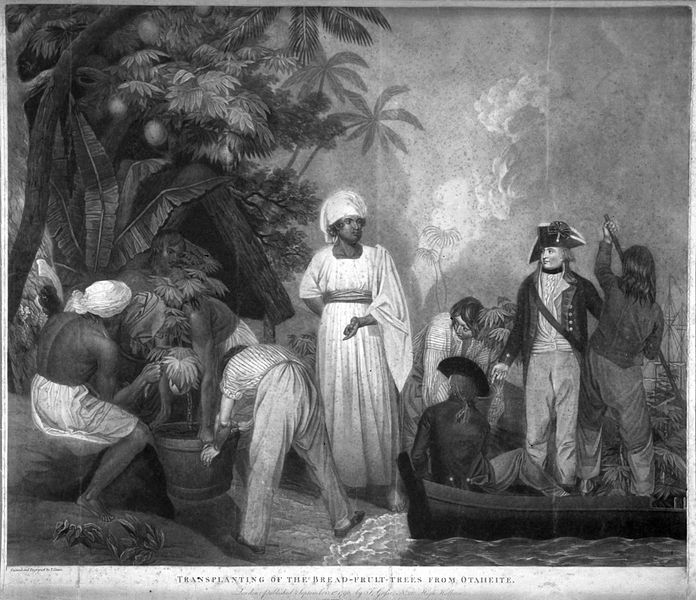On April 4, 1789, HMAV Bounty left Tahiti after a sojourn there of five months. The ship carried 1,015 breadfruit plants in pots, its great cabin fitted as a floating nursery. Bounty was already nearly 17 months out from England, and the voyage would likely last at least another year before it was likely to return to Portsmouth and home. They were bound for Jamaica. The breadfruit plants were intended to create a new food source for the slaves on the sugar plantations on that island, and others in Britain’s Caribbean colonies. Bounty‘s captain, Navy lieutenant William Bligh, was the only commissioned officer aboard the ship. His second in command, Fletcher Christian, had been appointed an acting lieutenant but held a warrant as Master’s Mate.

The cause of the mutiny less than four weeks later has ever since been debated. Christian’s rebellion against mindless tyranny and cruelty, exhibited by Bligh, was a romantic tale created by the former’s family in the mutiny’s aftermath. Some say Christian’s desire to return to the comfortable life offered in Tahiti, a sentiment shared with some of the men, was the cause. What is known for certainty is the Captain and 18 loyal members of the crew were set adrift in the vast Pacific, more than 4,000 miles from the nearest European settlement, with little to sustain them. That any of them survived to tell the story was a miracle. Here is how they did.
1. Bounty‘s launch was almost hopelessly overcrowded

The mutiny divided the crew of Bounty into three parties. One was loyal to Captain Bligh, and included his clerk, John Samuel; Bounty‘s gunner, William Peckover; the ship’s sailing master, John Fryer; and two Midshipmen, John Hallet and Thomas Hayward. Another group were neither active in the mutiny nor overly anxious to accompany their Captain, including Peter Heywood, boatswain’s mate James Morrison, and another Midshipman, George Stewart. Finally, there were the active mutineers, led by Fletcher Christian and Midshipman Edward “Ned” Young. The mutineers decided who was to be cast into the ship’s largest and most seaworthy small boat, its launch.
The launch was designed to accommodate a maximum of fifteen men, for short journeys, such as from ship to shore to replenish water barrels and foodstuffs. As Bligh stood on Bounty‘s main deck, those the mutineers wished to rid themselves of were ordered into the boat. Many grabbed what supplies they could; salt pork, ship’s bread, drinking water, and clothing. The ship’s carpenter, William Purcell, took the smaller of his two tool chests. By the time Bligh was ordered into the boat, 18 souls occupied its thwarts, and there were less than six inches of freeboard – the distance between the top of the boat’s gunwales and the surface of the sea.

